A mythical beast with a combination of reptilian and serpentine traits, the Dragon features in the legends of several cultures the world over.
Although the dragons of the East and the West have quite similar physical characteristics, their symbolic representations are drastically different and, in a way, indicate the cultural differences between these civilizations. The most notable difference between the Asian and European dragons is that while the European folklore has portrayed the dragons as evil, fearsome and malevolent creatures, the Asian cultures regard them as benevolent beings.
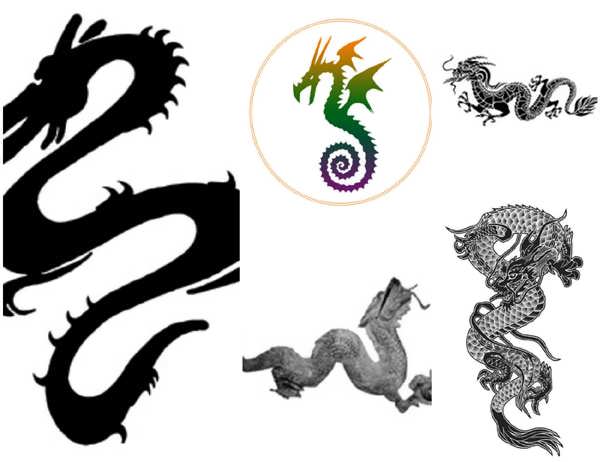
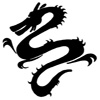 European dragons: The European dragons are depicted as fire-breathing, winged beasts living in underground lairs or in rivers. They were believed to guard great treasures and were often associated with heroes who tried to slay them. For instance, there is the all too familiar tale of the venerated military saint Saint George killing a dragon. Thus, according to the European myths, the dragons are symbolic of sin, wickedness, and ferocity. However, the Welsh folklore contains some notable exceptions to this view. European dragons: The European dragons are depicted as fire-breathing, winged beasts living in underground lairs or in rivers. They were believed to guard great treasures and were often associated with heroes who tried to slay them. For instance, there is the all too familiar tale of the venerated military saint Saint George killing a dragon. Thus, according to the European myths, the dragons are symbolic of sin, wickedness, and ferocity. However, the Welsh folklore contains some notable exceptions to this view. |
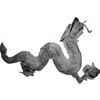 Asian Dragons: In the Orient, dragons symbolize wisdom, longevity, sexuality, fertility, procreation, and regeneration. They are seen as mythical beings with magical powers and symbolize water in Asian cultures. The dragons of ancient India have been the Nagas’, serpents that existed in the underworld and harbored enmity with the Eagle-Man God, Garuda. These creatures were considered the wise and benign guardians of the life-giving properties of water. Asian Dragons: In the Orient, dragons symbolize wisdom, longevity, sexuality, fertility, procreation, and regeneration. They are seen as mythical beings with magical powers and symbolize water in Asian cultures. The dragons of ancient India have been the Nagas’, serpents that existed in the underworld and harbored enmity with the Eagle-Man God, Garuda. These creatures were considered the wise and benign guardians of the life-giving properties of water. |
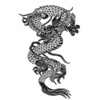 Japanese Dragons: The Japanese dragons are considered to be water deities. These huge, wingless serpentine beasts with clawed feet are related to rain and water bodies. Japanese Dragons: The Japanese dragons are considered to be water deities. These huge, wingless serpentine beasts with clawed feet are related to rain and water bodies.
|
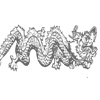 Vietnamese Dragons: According to Vietnamese mythology too, dragons bring rainfall and are symbolic of life, growth, existence, and prosperity. Similarly, in Korean culture also, dragons are regarded as bringers of clouds and rain and are associated with water and agriculture. Vietnamese Dragons: According to Vietnamese mythology too, dragons bring rainfall and are symbolic of life, growth, existence, and prosperity. Similarly, in Korean culture also, dragons are regarded as bringers of clouds and rain and are associated with water and agriculture. |
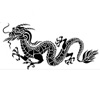 Chinese Dragons: The ancient Chinese regarded the dragon as the most potent of all symbols of energy and good fortune. They believed it to be the harbinger of incredible luck, prosperity, abundance, consistent success and high achievement. It was said to represent potent propitious powers, especially control over rainfall, floods, and hurricanes. The dragon is still a very popular symbol that stands for valiance, heroism, boldness, self-confidence, power, excellence, perseverance, nobility, vitality and happiness. It brings about physical as well as spiritual well-being and strength. It is related to the spring season and is representative of auspiciousness and new beginnings.Together with the Phoenix, the dragon symbolizes perfect balance. The dragon is a symbol of Yang and the phoenix of Yin, and their union is representative of good luck, success, love, and enlightenment. The Chinese dragons are often depicted with a pearl under the chin. Generally, it is said that the pearl symbolizes riches, prosperity and great fortune, while some mystics believe it to represent wisdom, enlightenment, and truth. Chinese Dragons: The ancient Chinese regarded the dragon as the most potent of all symbols of energy and good fortune. They believed it to be the harbinger of incredible luck, prosperity, abundance, consistent success and high achievement. It was said to represent potent propitious powers, especially control over rainfall, floods, and hurricanes. The dragon is still a very popular symbol that stands for valiance, heroism, boldness, self-confidence, power, excellence, perseverance, nobility, vitality and happiness. It brings about physical as well as spiritual well-being and strength. It is related to the spring season and is representative of auspiciousness and new beginnings.Together with the Phoenix, the dragon symbolizes perfect balance. The dragon is a symbol of Yang and the phoenix of Yin, and their union is representative of good luck, success, love, and enlightenment. The Chinese dragons are often depicted with a pearl under the chin. Generally, it is said that the pearl symbolizes riches, prosperity and great fortune, while some mystics believe it to represent wisdom, enlightenment, and truth.
While most of the other cultures view dragons only as an essential part of their folklore, the dragon symbol is still deep-rooted in Chinese culture. He is a revered figure who continues to be identified with excellence, success, and affluence.
|
 American Dragons: The dragons in the modern North American and the ancient Mesoamerican mythologies are mostly serpentine in form. The US and Canada have a common dragon, the ‘Horned Snake’, that is not a bad creature and is believed to come to the aid of young women. The Mesoamerican dragons are important gods in the Aztec and Mayan cultures. Most notable among them is the Feathered Serpent, the Quetzalcoatl or Kukulkan. The benevolent dragon is credited with creating the Earth and everything else on it. It was believed to devour evil people and could control the weather and the rain, just like the Chinese and many other Asian dragons. American Dragons: The dragons in the modern North American and the ancient Mesoamerican mythologies are mostly serpentine in form. The US and Canada have a common dragon, the ‘Horned Snake’, that is not a bad creature and is believed to come to the aid of young women. The Mesoamerican dragons are important gods in the Aztec and Mayan cultures. Most notable among them is the Feathered Serpent, the Quetzalcoatl or Kukulkan. The benevolent dragon is credited with creating the Earth and everything else on it. It was believed to devour evil people and could control the weather and the rain, just like the Chinese and many other Asian dragons. |







